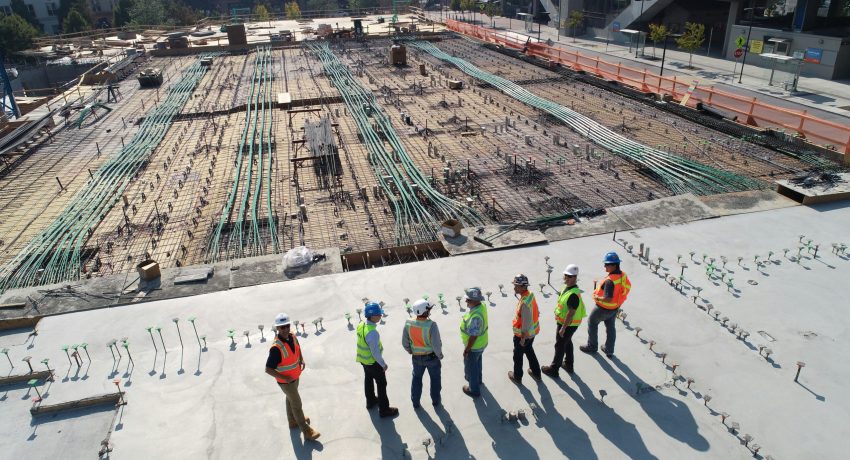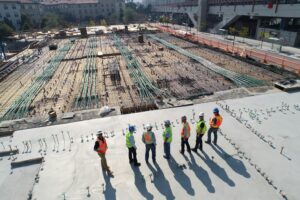Hidden Costs to Watch for During Construction
Identifying Hidden Costs in Construction Projects
This section will delve into the various hidden costs that can emerge during construction projects, highlighting unexpected expenses that project managers and stakeholders should be aware of to ensure successful project completion within budget.
Unforeseen Material Overruns
Issues such as inaccurate material estimates or sudden price increases can result in significant unexpected expenses. Project managers must remain vigilant in tracking material usage and market trends to avoid budget overruns.
Labor Inefficiencies and Unexpected Delays
Labor costs can rise due to inefficient work practices or unforeseen delays. Identifying areas where improvements can be made, such as through better workforce management and scheduling, is critical to controlling labor expenses.
Regulatory and Compliance Changes
Changes in building codes or additional compliance requirements can add unanticipated costs to a construction project. Staying informed about potential regulatory updates and building buffer periods into project timelines can help mitigate these hidden financial impacts.
Strategies to Manage Hidden Costs in Construction
This section will explore effective strategies and best practices for anticipating, managing, and mitigating hidden costs in construction projects. It will provide practical advice for project managers to keep projects on budget and avoid financial surprises.
Comprehensive Risk Assessment
Conducting a thorough risk assessment at the onset of a construction project is crucial for identifying potential hidden costs. By evaluating all stages of the project and anticipating areas where unexpected expenses are likely to arise, project managers can implement preventive strategies and allocate sufficient contingency funds.
Regular Financial Audits
Implementing regular financial audits throughout the construction process helps in monitoring and managing deviations from the budget. These audits provide insights into spending patterns, allowing project managers to make necessary adjustments before costs spiral out of control, thus keeping hidden costs in check.
Utilizing Advanced Project Management Tools
Leveraging advanced project management tools can greatly enhance the ability to track and control hidden costs. These tools offer real-time data analysis and reporting features that allow project managers to detect anomalies promptly, leading to more effective cost management and minimizing unexpected financial burdens.
Impact of Hidden Costs on Construction Budgets
This section will discuss the significant impact that hidden costs can have on construction budgets. It will examine how these unexpected expenses can disrupt financial planning and allocation, stressing the importance of proactive cost management to maintain financial health in construction projects.
Budget Overruns and Financial Strain
Budget overruns due to hidden costs can place considerable financial strain on construction projects. These unexpected expenses often lead to the reevaluation of financial plans, forcing project managers to divert funds from other important areas or secure additional financing. Effective budget management strategies are essential to mitigate these impacts.
Undermining Project Profitability
Hidden costs can dramatically undermine the profitability of construction projects. These costs, if not anticipated and managed, can erode profit margins, leaving stakeholders with reduced returns on investment. Understanding and anticipating potential hidden costs can safeguard project profitability and ensure economic viability.
Delays in Project Completion
The emergence of hidden costs often leads to delays in project completion. These delays can arise from a need to reallocate resources or address unforeseen financial issues, impacting the overall timeline and potentially leading to penalties or contract breaches. Proactive cost management is crucial to avoid such disruptions and maintain project schedules.
Common Sources of Hidden Costs in Construction
This section will identify and analyze the frequent sources of hidden costs in construction projects. It will provide insights into areas such as material overruns, labor inefficiencies, and regulatory changes that can lead to unforeseen expenses, emphasizing the need for comprehensive planning and vigilance.
Misestimating Material Needs
Inaccurate estimation of material requirements is a common source of hidden costs in construction. This can occur when initial assessments fail to account for potential waste or unexpected usage, resulting in the need for additional purchases at possibly higher prices. Comprehensive material planning and regular reviews can help in reducing these unforeseen expenses.
Fluctuations in Labor Costs
Labor costs can be unexpectedly high due to variations in productivity, overtime requirements, or the need for specialized skills. Misjudgments in workforce needs or unexpected changes in labor conditions can strain budgets. Implementing effective labor management and scheduling practices can mitigate these hidden costs.
Regulatory and Permit Uncertainties
Unanticipated changes in regulations or delays in obtaining necessary permits can add hidden costs to construction projects. These changes often require adjustments in design or construction methods, leading to additional expenses. Staying informed and proactive about potential regulatory changes is essential to avoid these financial setbacks.
Conclusion: Navigating Hidden Costs in Construction
In conclusion, recognizing and managing hidden costs in construction is crucial for maintaining budget integrity and ensuring project success. By proactively identifying common sources of unexpected expenses, such as material misestimations, labor inefficiencies, and regulatory changes, project managers can implement effective strategies to mitigate financial impacts. Through comprehensive planning, vigilant monitoring, and adaptive management practices, the challenges posed by hidden costs in construction can be successfully navigated, safeguarding both project timelines and profitability.






